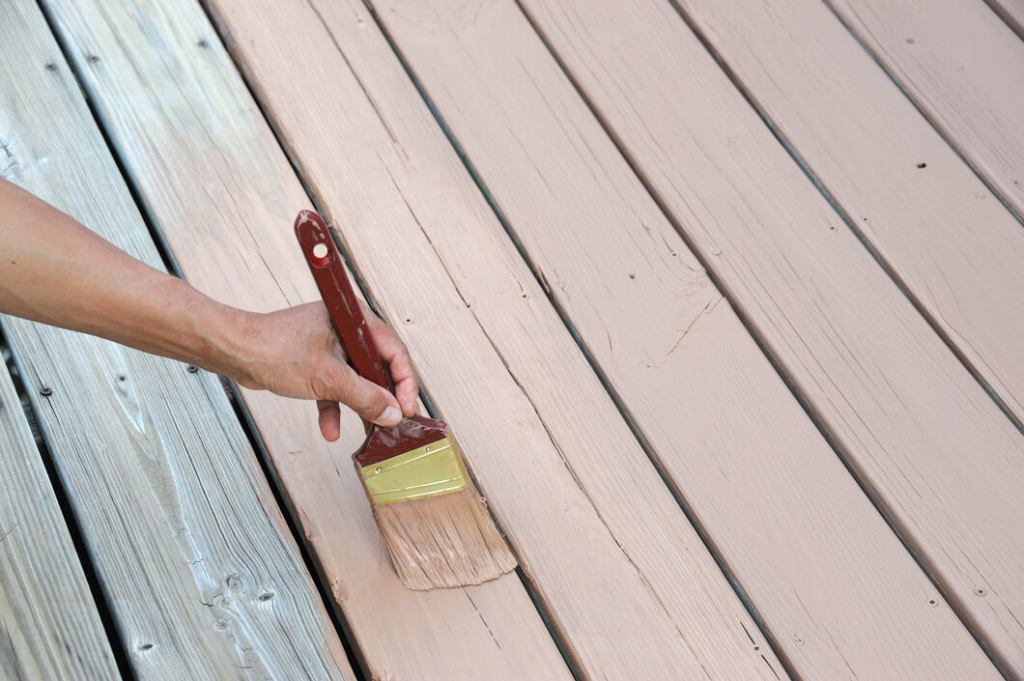If you have a timber deck and find yourself yearning for a fresh look, then the answer is yes – you can definitely change the colour of your decking. Many people initially opt to paint their decks, only to realize a few years later that they prefer the charm of a natural wood finish. If you’re considering giving your deck a makeover, this blog post will guide you through the process and provide useful insights to help you achieve your desired outcome.
Understanding Your Options
Before delving into the details of changing your deck’s colour, it’s important to understand your options. There are various methods available, each with its own set of advantages and considerations:
- Painting: Painting is one way to transform the look of your deck entirely. It offers endless possibilities in terms of colour choices and can completely cover up any existing stains or discoloration on the wood surface. However, keep in mind that once painted, it may be challenging to revert back to a natural wood finish.
- Staining: Staining is another popular option for changing your deck’s colour while still allowing the natural beauty of the wood grain to shine through. Stains come in different opacities – from transparent to semi-transparent and solid – providing varying levels of coverage.
- Deck Overlays: If you’re looking for a drastic change in both color and texture, consider installing deck overlays. These are essentially thin composite boards that can be placed over existing decking material, instantly transforming its appearance.
Now that we’ve explored some options for changing your deck’s colour let’s dive deeper into each method.
Removing the Previous Finish
Regardless of which method you choose, removing the previous finish is crucial for achieving optimal results. Here are some steps you should follow:
- Assessing the condition: Inspect your current finish carefully before proceeding with any removal. If the existing paint or stain is in good condition, you may be able to apply a new coat directly over it after proper preparation. However, if the finish is peeling, flaking, or significantly worn down, it’s best to remove it entirely.
- Stripping the old finish: To remove the previous finish, you can utilize chemical strippers or mechanical methods like sanding or power washing. Chemical strippers are effective but require caution and proper safety measures during application. Sanding may take more time and effort but offers precise control over the removal process.
- Preparing the surface: After removing the previous finish, thoroughly clean your deck to ensure there is no debris or residue left behind. This step is crucial for achieving a smooth and even application of your new colour.
Once you’ve completed these initial steps, you’re ready to move on to applying your desired colour to your decking.

Painting Your Deck
If you decide that painting is the best option for changing your deck’s colour, here are some important considerations:
- Choosing the right paint: Opt for a high-quality exterior paint specifically formulated for decks and other outdoor surfaces. These paints are designed to withstand UV rays, moisture, and foot traffic.
- Prepping the surface: Before painting, make sure your deck is clean and dry. Fill any cracks with wood filler and sand down rough areas for a smooth finish.
- Applying primer: If you’re painting a bare wood deck or drastically changing colours, applying a primer will enhance adhesion and improve the longevity of your paint job.
- Painting technique: Use long, even strokes with a brush or roller for an even coat of paint on your deck boards. Apply multiple thin coats rather than one thick coat for better durability.
Remember that once your deck is painted, maintaining its appearance will require periodic touch-ups or repainting as needed.

Staining Your Deck
If you prefer to enhance the natural beauty of your timber deck while changing its colour, staining is an excellent choice. Consider the following steps for a successful staining project:
- Choosing the right stain: Select a high-quality exterior wood stain that suits your desired colour and opacity. Transparent stains allow the most wood grain to show through, while semi-transparent and solid stains provide greater coverage.
- Prepping the surface: Like with painting, ensure your deck is clean and dry before applying stain. Sanding may be necessary to remove any remnants of previous finishes or rough areas.
- Applying the stain: Use a brush, roller, or sprayer to apply an even coat of stain in the direction of the wood grain. Work in manageable sections to avoid lap marks or uneven color distribution.
- Sealing the finish: To protect your newly stained deck from weather elements and foot traffic, it’s crucial to seal it with an appropriate exterior wood sealer or topcoat.
Regular maintenance will involve periodic reapplication of stain as recommended by the manufacturer.
Conclusion
Changing the colour of your decking can breathe new life into your outdoor space and provide a fresh aesthetic appeal. Whether you choose to paint or stain, proper preparation and meticulous application are key for achieving beautiful and long-lasting results. Consider your preferred look, durability requirements, and maintenance expectations when selecting a method for changing your deck’s colour. With careful planning and execution, you’ll soon be enjoying a transformed deck that perfectly complements your outdoor oasis!

